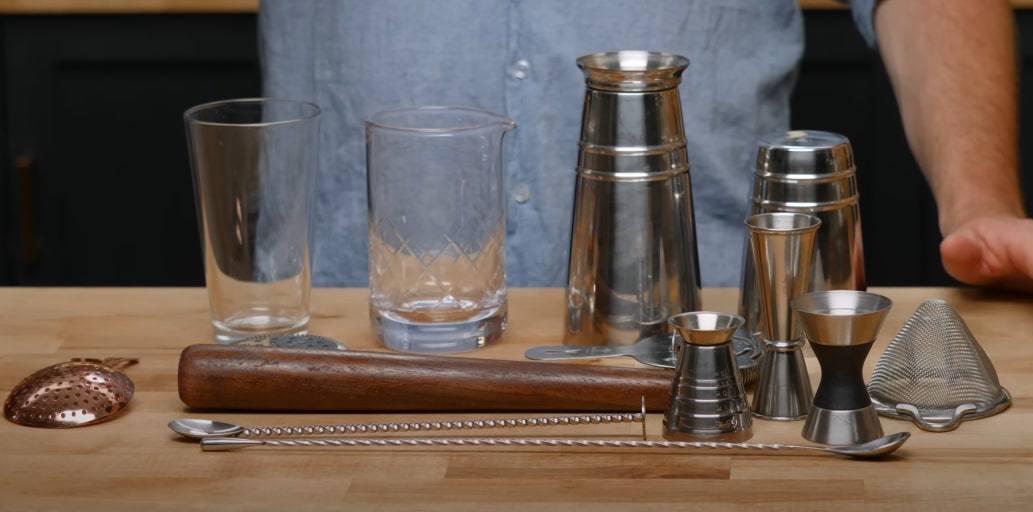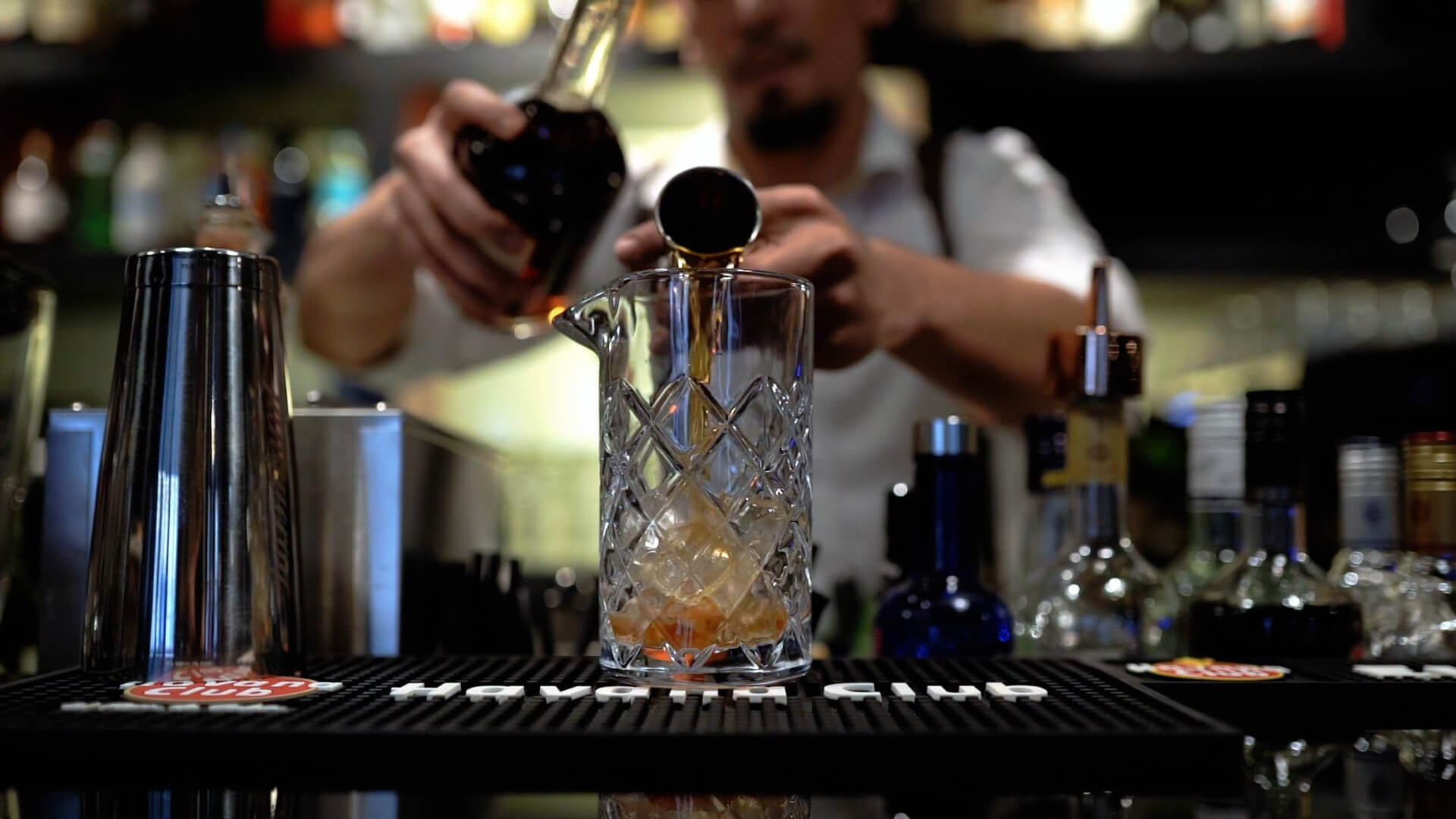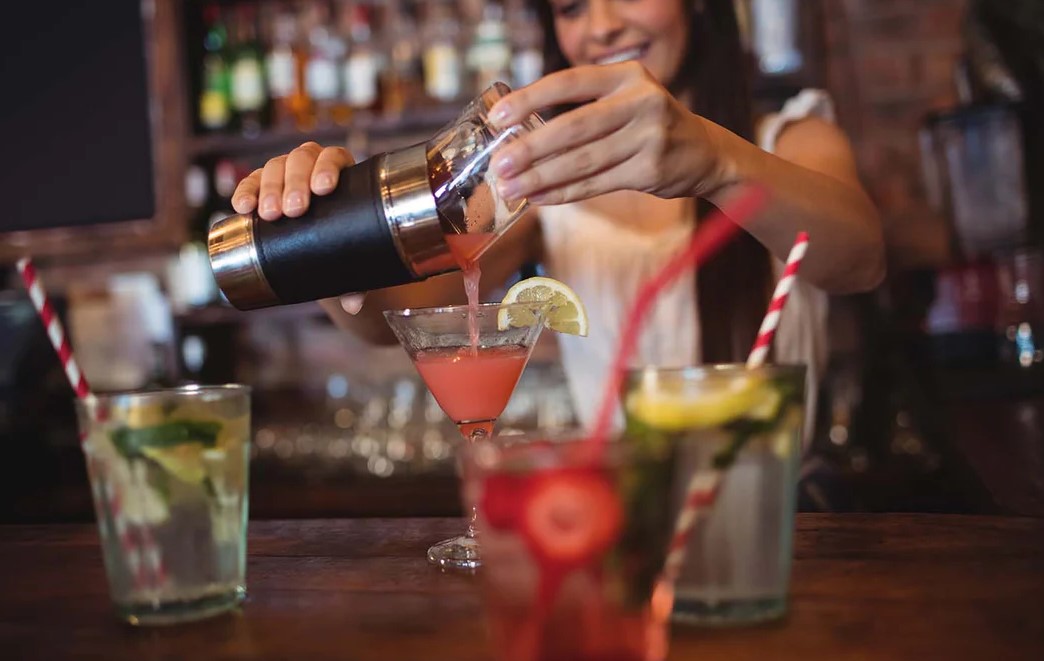Starting as a bartender is a bit more than just pouring drinks. It’s about understanding the vibe, connecting with people, and handling all sorts of situations. If you’ve ever thought about jumping into bartending, know that it’s a fast-paced job, but one filled with excitement and the chance to meet all kinds of people.
When I first started, I didn’t know much. You quickly learn to balance everything from drink orders to cleaning up. There’s a real satisfaction that comes from mastering the rhythm of the bar.
Each shift teaches you something new, and before you know it, you’re moving with confidence and handling things like a pro.
For anyone serious about improving their skills, The New Craft of the Cocktail by Dale DeGroff is a fantastic resource. It offers not only amazing recipes but also insights that help you understand the craft on a deeper level. This book is a must-have for anyone stepping into the world of bartending.
I will now share the most important steps and tips that will help you become a bartender.
Table of Contents
Toggle1. Start with the Basics

You’ll be handling all sorts of responsibilities, from taking orders and making cocktails to managing payments and keeping the bar clean. Expect long hours on your feet, especially during peak times like weekends or happy hours.
Also, you’ll need to check IDs, maintain stock, and monitor the crowd. Bartenders need to keep track of everything and keep the place running smoothly.
Here are the common tasks:
- Mixing and serving drinks
- Checking customers’ IDs
- Handling payments through the register or POS
- Maintaining cleanliness (which often means cleaning a lot)
- Stocking and organizing supplies
- Monitoring customer behavior to avoid over-serving
Essential Skills You Need to Build
- Customer Service: You’re the face of the bar. Making customers feel welcome and appreciated is a huge part of the job. If you’re good at connecting with people, they’ll keep coming back for more.
- Multitasking: Bartending often means managing multiple orders at once. You’ll need to juggle drink requests, customer interactions, and cleaning duties all at the same time.
- Teamwork: You’re not working solo here. Collaboration with waitstaff, cooks, and other bartenders is essential to keeping the bar running smoothly.
- Memory: Bartenders often have to recall orders quickly and remember regular customers’ preferences. Sharpening your memory is a big plus in this role.
- Basic Math: Handling cash and tips is a regular part of the job, so you’ll need to be quick with calculations, especially when things get busy.
Learn the Tools of the Trade
Every bartender needs to be comfortable with a few essential tools. Learn how to use cocktail strainers, jiggers, shakers, and muddlers. Each tool plays an important role in creating the perfect drink.
You’ll also want to understand basic bartending terminology, like what it means to serve a drink “neat” (no ice) or “on the rocks” (with ice).
Essential Bar Tools

- Cocktail Shaker: Used for mixing drinks quickly and thoroughly.
- Jigger: A small measuring tool to ensure you pour the right amount of liquor.
- Muddler: Used to crush ingredients like mint for drinks like mojitos.
- Strainer: Keeps ice and solid ingredients out of the final drink.
Start Practicing at Home
You don’t need to wait until you’re behind a bar to start learning. Practice at home by following recipes, measuring out ingredients, and getting comfortable with the tools.
It’s a great way to build confidence before stepping into a real environment.
2. Get Your Bartending License if It’s Needed

Depending on where you live, a bartending license might be required. While not every state or country demands one, getting licensed can give you an edge over other candidates and show that you’re serious about the profession.
Let’s break down what you need to know about getting a bartending license.
Check the Local Requirements
Some states require a license to work as a bartender, while others don’t. For example, states like Washington, D.C., and Nevada require bartenders to complete responsible alcohol service training to obtain a license.
Even in places where a license isn’t mandatory, some employers prefer candidates who have it. Make sure you know what’s required in your area before applying for jobs.
Here’s what you typically need to check:
- Minimum age requirement: Some states allow bartenders as young as 18, while others require you to be 21.
- Responsible alcohol service course: In many states, this course covers things like how to handle intoxicated customers and understanding local liquor laws.
How to Get the Bartending License?
If you do need a bartending license, the process is usually straightforward. You’ll take a short course, either online or in person, and then pass a test.
The course covers important topics like handling customers, understanding alcohol laws, and identifying intoxication.
The steps usually look like this:
- Find a certified course: Make sure the course is state-approved.
- Complete the course: This can take anywhere from a few hours to a few days, depending on the provider.
- Pass the test: After completing the course, you’ll need to pass an exam that tests your knowledge of alcohol safety and local laws.
- Receive your license: Once you pass, you’ll get your certificate, which allows you to legally serve alcohol.
Benefits of Having a Bartending License
Even if a license isn’t required, it’s worth getting for a few reasons:
- Increased job opportunities: Some employers prefer or require a licensed bartender.
- Better pay potential: Licensed bartenders may be able to negotiate better pay.
- More confidence: Knowing the ins and outs of the laws will give you confidence in your role, especially when handling difficult situations.
3. Learn the Bartender Lingo to Blend In
When you’re new, a lot of the terms used behind the bar can sound confusing, but you’ll pick them up quickly. Some of the most common words you’ll hear involve how drinks are prepared and served.
- Neat: A shot of liquor served straight from the bottle, with no ice.
- On the Rocks: A drink served over ice.
- Dirty: When olive juice is added to a martini.
- Straight Up: A drink that’s shaken or stirred with ice and then strained into a glass (without the ice).
- Shaken vs. Stirred: Some drinks (like a martini) can be either shaken in a cocktail shaker or stirred with a bar spoon, depending on customer preference.
- Muddle: The act of crushing ingredients (like mint for a mojito) to release their flavors.
Drink Orders
Customers often have specific ways they want their drinks. Being able to understand and quickly respond to orders like “Rum and Coke, easy on the Coke” or “Whiskey Sour, no egg white” will make you a more efficient bartender.
Also, be prepared for some customers to get fancy with their orders, especially when they request classic cocktails or off-the-menu drinks.
Common phrases you should know:
- Back: A small, non-alcoholic drink served alongside alcohol (e.g., “whiskey with a water back”).
- Chaser: A drink taken immediately after another drink, typically to cut the strength of a shot.
- Jigger: A tool used to measure liquor before adding it to a drink (usually 1.5 ounces on one side and 1 ounce on the other).
Use Industry Jargon to Your Advantage
Not only does knowing the lingo make your job easier, but it also helps you stand out as a knowledgeable and confident bartender.
Knowing terms like “burnt” (adding a bit of Scotch to a martini), or “call drink” (when a customer specifies both the liquor and the mixer) shows you’ve done your homework.
Plus, it helps you bond with other bartenders and kitchen staff since everyone in the industry speaks this language.
4. Start as a Barback to Get Experience

A barback is essentially the bartender’s assistant, taking care of all the manual tasks so that the bartenders can focus on serving customers. You’ll be handling a wide range of duties, such as:
- Restocking liquor, beer, and mixers: Keeping the bar fully stocked is crucial during busy shifts.
- Washing and organizing glassware: You’ll need to stay on top of cleaning glasses so that the bartenders always have what they need.
- Cleaning up spills and messes: Bars can get messy fast, and it’s your job to keep everything looking tidy.
- Carrying heavy items: From kegs to cases of beer, you’ll be doing a lot of lifting and hauling.
Why Being a Barback is a Smart Move?
There are a few key reasons why starting as a barback is a smart way to launch your bartending career:
- You learn on the job: Watching the bartenders mix drinks and interact with customers gives you real-world experience that you just can’t get in a classroom.
- Build relationships: Working as a barback allows you to build connections with bartenders and managers. Once they see your dedication, they’ll be more likely to offer you a bartending position when one opens up.
- Hone your skills: From organization to multitasking, being a barback helps you develop key skills that will make you a better bartender in the future.
5. Create a Solid Bartender Resume

If you haven’t bartended before, don’t worry. Many of the skills you’ve gained from other jobs can easily transfer to bartending. Focus on skills like:
- Customer Service: If you’ve worked in retail or food service, you already have experience dealing with customers, which is one of the most important parts of bartending.
- Multitasking: In any fast-paced job, especially in the food industry, you’ve likely had to juggle multiple tasks at once. This is crucial behind the bar, where you’ll be managing orders, making drinks, and interacting with customers simultaneously.
- Teamwork: Bartending requires collaboration with wait staff, barbacks, and management. If you’ve worked in a team environment before, this is something to highlight.
Include Certifications and Relevant Training
Even if you don’t have bartending experience, certifications like a bartending license or alcohol safety course will help boost your resume. Include any relevant training, such as:
- Bartending License: Mention this if you’ve completed a state-approved alcohol service course. It shows you’re knowledgeable about serving alcohol responsibly.
- Alcohol Safety Training: Highlight any training you’ve completed on handling intoxicated customers or understanding local liquor laws.
- First Aid Certification: This can be an asset in the bar environment, showing you’re prepared for emergencies.
6. You Must Have a Proper CV
Your resume should be easy to read and professional. Keep it to one page, use simple fonts, and make sure your key information stands out. Hiring managers often skim through resumes quickly, so you want your qualifications to be clear at a glance.
Here’s a simple format you can follow:
- Contact Information: Name, phone number, email, and location.
- Objective: A short statement explaining why you’re the right fit for the job. Mention your passion for bartending and your eagerness to learn.
- Skills: List relevant skills like customer service, multitasking, and teamwork.
- Experience: Include any previous jobs where you gained transferable skills, even if they weren’t in the bar industry.
- Certifications: Highlight any bartending licenses, alcohol safety training, or relevant certifications.
- Education: If relevant, mention your high school diploma or any college coursework.
You can download an example of a good CV for bartender here.
7. Target List of Bars is a Way to Go

Think about the type of environment you’d thrive in. Do you prefer fast-paced, high-energy bars, or do you see yourself mixing craft cocktails in a more intimate, upscale setting?
By creating a list of bars that align with your goals, you can tailor your applications and show that you’re genuinely interested in working there.
Here’s how to narrow down your list:
- Research the bar’s vibe: Visit the bars, look at their social media, or read reviews. This helps you understand the type of clientele they serve and whether the bar’s style suits your personality.
- Check for open positions: Some bars will post job openings online, but others might not advertise at all. After identifying your target bars, check their websites or stop by in person to see if they’re hiring.
- Ask around: If you’ve already networked with bartenders or managers in the area, ask if they know of any places looking to hire. Referrals can significantly increase your chances of getting noticed.
8. Work On Your Skills All the Time
Once you’ve got the basics down, consider taking advanced bartending courses to sharpen your skills. These classes often cover more complex cocktail techniques, the science behind mixology, and how to create unique, signature drinks.
Some courses even dive into specific areas like flair bartending, where you can learn the showmanship side of the job, or craft cocktail creation, which focuses on creating upscale drinks with a modern twist.
Benefits of taking advanced courses include:
- Better job opportunities: Many high-end bars look for bartenders with advanced skills in mixology or specific techniques.
- Specialization: You can specialize in certain types of drinks (e.g., tiki cocktails, whiskey cocktails) or bartending styles (e.g., flair, craft).
- Higher earning potential: With more skills, you may be able to command a higher salary or work at more exclusive venues.
Stay Updated on Trends
The bartending world is constantly changing. New ingredients, techniques, and trends are always popping up, and it’s important to stay informed. For example, the growing popularity of low-ABV (Alcohol by Volume) cocktails and non-alcoholic spirits is transforming menus worldwide.
Staying on top of these trends helps you stay relevant and gives you something fresh to offer your customers.
Practice Making Signature Cocktails
As you grow in your bartending career, creating your own signature cocktails can set you apart from others. This requires creativity, knowledge of ingredients, and a deep understanding of flavor profiles.
Experiment with different combinations, take inspiration from classic cocktails and don’t be afraid to try new things. Signature drinks can become a hallmark of your bartending style and even get you recognized within the industry.
Tips for creating your own cocktails:
- Start with a classic base: Use classics like the Old Fashioned or Margarita as a foundation, then add your twist.
- Experiment with fresh ingredients: Herbs, fruits, and spices can add unique flavors to your drinks.
- Balance flavors: Ensure your drink has a good balance of sweetness, bitterness, acidity, and alcohol content.
- Ask for feedback: Let customers or friends try your creations and give honest feedback.
FAQs
How much do bartenders get paid?
On average, bartenders in the U.S. make around $23,000 per year, but with tips, many can earn significantly more. In high-end bars or busy cities, bartenders can bring in anywhere from $40,000 to $150,000 annually.
Tips play a huge role in earnings, and in some cities, bartenders can make up to $400 or more per night in tips.
How long does it take to become a bartender?
If you attend a bartending school, courses usually last a few weeks. However, many bartenders learn on the job as barbacks, which can take several months to a year before transitioning to full bartending duties.
What is the legal age to bartend?
In most U.S. states, the minimum age to serve alcohol is 18, but some states require bartenders to be at least 21.
How many hours a week do bartenders work?
Bartenders typically work between 30 to 40 hours per week, but it can vary depending on the type of establishment and how busy it is. Full-time bartenders often work long shifts that can last 8-10 hours, especially on weekends and holidays.
Do bartenders get health benefits?
Most bartending jobs do not come with traditional benefits like health insurance or retirement plans, especially in smaller bars or restaurants.
Last Words
Becoming a bartender involves more than just mixing drinks. It’s about mastering a range of skills, from customer service to multitasking, while staying physically and mentally sharp. Whether you’re just starting as a barback or working your way into a leadership role, bartending offers exciting opportunities for growth and creativity.









